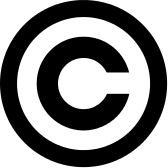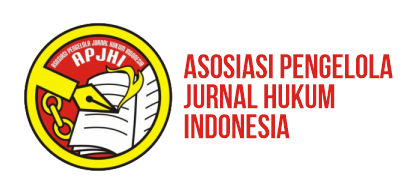Tafsir Konstitusionalitas terhadap Batas Usia Pemidanaan Anak
DOI:
https://doi.org/10.31078/jk855Keywords:
Child, criminal responsibility, legalityAbstract
Child’s age limit acts is an absolute requirement which shall be notified in order to avoid him or her to be a victim. Acts No. 3, 1997 about Court of Children states that 8 (eight) years old as the limit and it can be proposed to. Of course this statement brings consequence to children growth’s rights and it is considered as a threat that he/she shall experience an hard law-process. On another hand, the decision of Supreme Court No. 1/PUU-VII/2010 answers this problem, by pulling up the application and deciding 12 years old as a new limit for the accused child. The regulation definitely brings a big change into child’s criminal law concept in Acts No. 3, 1997. The objection of law’s application as limitation for a child in the court also said by the applicant and considered as legality and human right trafficking.
References
Frank R., Prassel. 1979. Criminal Law, Justice, and Society, Goodyear Publishing, Santa Monica California
Garner., Bryan A., 2004. Black’s Law Dictionary, Thomson-West, St. Paul-Minnesota
Prodjodikoro, Wirjono., 1981, Hukum Perkawinan di Indonesia, Sumur, Bandung
Hadikusuma, Hilman., 1993, Hukum Adat dalam Yurisprudensi., Citra Aditya Bakti, Bandung
Hadisuprapto, Paulus., 2010, Delinkuensi Anak: Pemahaman dan Penanggulangannya., BayuMedia, Malang
Lamintang, P.A.F.,1997, Dasar-dasar Untuk Mempelajari Hukum Pidana yang Berlaku di Indonesia. Cet. III, Citra Aditya Bakti, Bandung
Prasetyo, Teguh., 2010, Kriminalisasi dalam Hukum Pidana, NusaMedia, Bandung
Sahetapy, J.E., 1979, Ancaman Pidana Mati terhadap Pembunuhan Berencana, Alumni, Bandung
Schmid, J.J. von.. 1979, Pemikiran tentang Negara dan Hukum. Cet. III, Pembangunan & Erlangga, Jakarta
Seagle,William., 1971, Men of Law: From Hammurabi to Holmes.: Hafner Publishing Company, New York
Setyowati, Irma., 1990, Aspek Hukum Perlindungan Anak, Bumi Aksara, Jakarta
Supeno, Hadi., 2010, Kriminalisasi Anak: Tawaran Gagasan Radikal Peradilan Anak Tanpa Pemidanaan. Gramedia Pustaka Utama, Jakarta
Susilowati, Ima., et.al, 2003, Pengertian Konvensi Anak, UNICEF, Jakarta
Jurnal Hukum
Christianto, Hwian. “Pembaharuan Makna Asas Legalitas”, Jurnal Hukum dan Pembangunan 39, No. 3 (Juli 2009), hlm. 347-375
Hadisuprapto, Paulus. “Peradilan Anak Restoratif: Prospek Hukum Pidana Anak Indonesia.” Jurnal Yuridika 24, No. 2 (Mei-Agustus 2009), hlm. 105-116
Hernawati, Elly. “Perlindungan Hukum terhadap Anak dalam Kaitannya dengan Pemanfaatan Teknologi dalam Proses Pembelajaran”. Jurnal Yustika 11, No. 2 (Desember 2008), hlm. 169-178
Prakoso, Abintoro. “Perlindungan Hak Anak Pelaku Tindak Pidana pada Tahap Penyidikan”, Jurnal Yustika 11, Nomor 1 (Juli 2008), hlm. 1-12
Purwoleksono, Didik Endro. “Penanganan Perkara Pidana yang Tersangka/Terdakwanya Anak-anak”, Jurnal Yuridika 19, No. 3, (Mei-Juni 2004), hlm. 177-193
Wahyono, Padmo. “Bagaimana Membangun dan Membina Hukum Nasional”. Jurnal Hukum dan Pembangunan XVI, No. 2 (April 1986), hlm.144-152
Sumber Internet
Mahkamah Konstitusi, 2010, “Putusan Mahkamah Konstitusi”, tersedia di website http://www.mahkamahkonstitusi/putusan/ Putusan%20%205_PUU_VIII_2010%20_edit%20panitera_pdf , diakses tanggal 18 Januari 2011
Downloads
Published
How to Cite
Issue
Section
License
Authors who publish with this journal agree to the following terms:
- Copyright of the published articles will be transferred to the journal as the publisher of the manuscripts. Therefore, the author confirms that the copyright has been managed by the publisher.
- The publisher of Jurnal Konstitusi is The Registrar and Secretariat General of the Constitutional Court of the Republic of Indonesia.
- The copyright follows Creative Commons Attribution-NonCommercial-ShareAlike 4.0 International License: This license allows reusers to distribute, remix, adapt, and build upon the material in any medium or format for noncommercial purposes only, and only so long as attribution is given to the creator. If you remix, adapt, or build upon the material, you must license the modified material under identical terms.

















